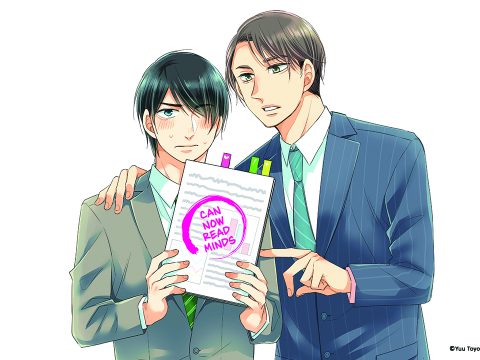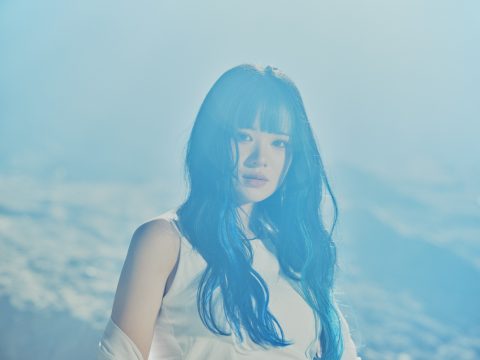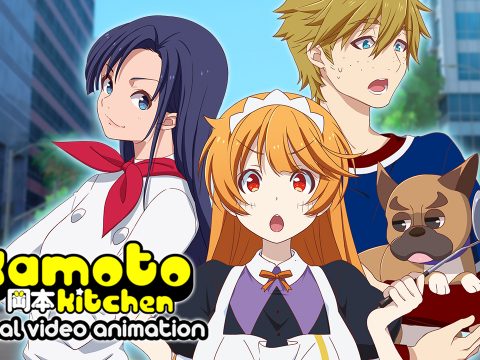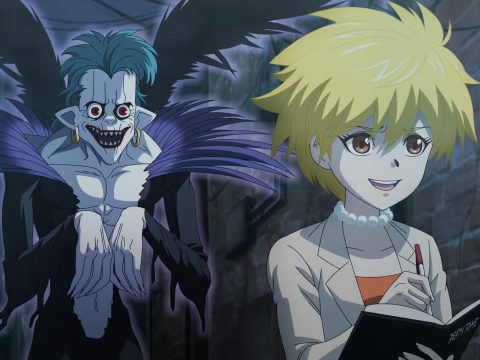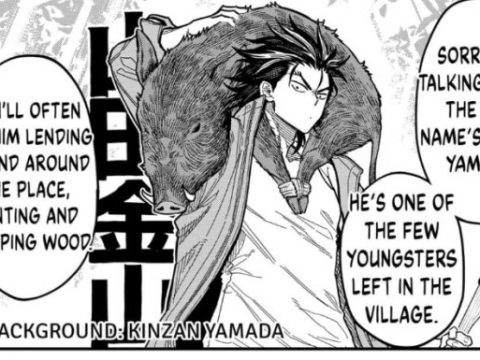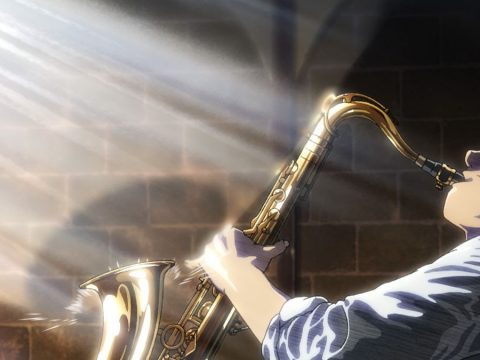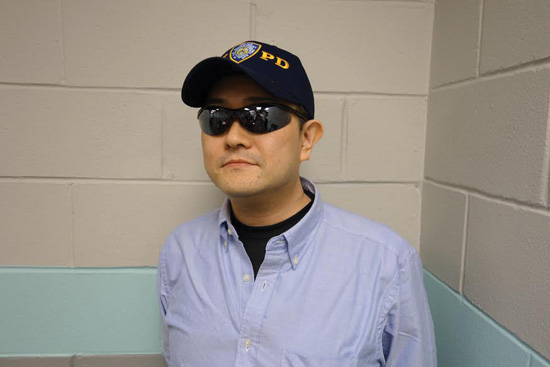
Manga authors rarely visit the United States because of their constant deadlines, so seeing Rei Hiroe, creator of Black Lagoon, at AnimeNEXT 2016 was quite the rarity. We got a chance to talk with him … while surrounded by a small army of publishing execs and PR question pre-screeners for an authentic Japanese media interview experience!
Otaku USA: I heard the original concept for Black Lagoon was medieval pirates instead of modern-day ones. Besides modern day, are there any other types of settings you would be interested in exploring?
Rei Hiroe: In actuality, Black Lagoon was always going to be about modern pirates, though since it’s set in the 1990s “modern” is relative. I know someone involved with Tsukihime, and if I had a chance to be involved with something that was occult or Gothic-style fantasy, I would definitely be interested in that.
Black Lagoon is inspired a lot by American motion pictures. What considerations do you take when creating an exciting action scene on the printed page compared to something in motion?
Film is an “active” medium. With manga, it’s as if you only have still frames so you need to find the best moments in time to convey meaning and movement. But one of the advantages of manga is that you’re not anchored to reality. For instance, you can make guns bigger than their physical counterparts and make explosions far larger and more gaudy. Those are tools I use to convey the same meaning.
Revy’s dual pistols have me wondering, how familiar are you with Hong Kong action cinema from the 1980s and 1990s? Do you prefer John Woo or Ringo Lam?
I actually don’t know of Ringo Lam’s work, but I’ve been a fan of John Woo even before conceptualizing Black Lagoon. His work and American filmmakers, such as Sam Peckinpah and Quentin Tarantino, are a big part of what I’m influenced by.
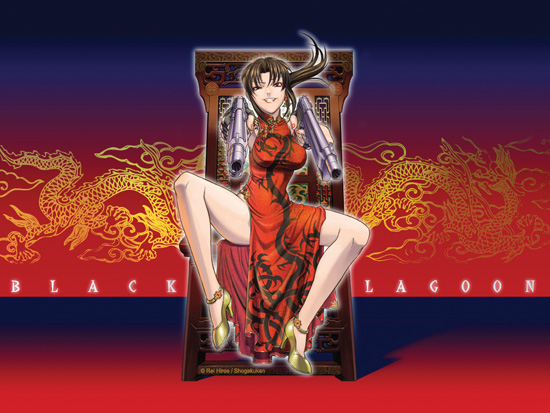
Most of the action movies Black Lagoon references are from the 1990s or earlier. What was the last really great action movie that you saw?
[some time elapses as he checks IMDB] There was a Korean film from 2011 called The Front Line, which was more of a “war” movie than “action” as it was about the Korean War. Though on the plane ride over, I watched Deadpool and I did enjoy that!
The character Benny is from Florida. Since I’m from Florida, what made you decide to have Benny be from there? The TV series Miami Vice, perhaps?
I am a fan of both the TV show and the movie remake of Miami Vice, but it didn’t influence the creation of Benny. I figured with the way he dressed, I felt that Florida particularly is THE place for someone with a hippy mind-set …
… but Florida doesn’t really have hippies …
… Oh.
In a previous interview, you noted that you don’t intentionally use cute girls or moé characters. What then, was the motivation for dressing Roberta as a maid? Was this a reaction to the moé fan interest in maids back then?
It’s not that I don’t have interest in moé stuff, but it really depends on whether there’s a relevancy to use it in what I’m creating. There was a slight influence from the growing interest in maids at the time, but I mainly imagined that an affluent family in South America would dress maids that way. It wasn’t a take on “moé culture” as much as it made contextual sense.
What about Hansel and Gretel? That story arc is much more dark and serious compared to the rest of Black Lagoon. How did that come about?
Originally it was not supposed to be like that at all. At first I thought it’d be really great if there were these cute twin kids wielding giant guns and they’re really loopy! But then I started doing some research, reading about the history of Romania—where they’re from—and the Cold War/Soviet era. Things were really bad back then, so the story became much darker based on what I’d learned. It was … not exactly the happiest place on Earth.
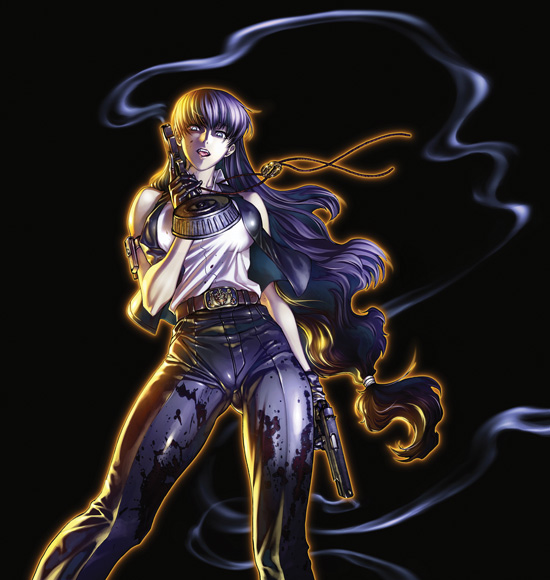
Recently a great manga author passed away: Mikiya Mochizuki, the creator of Wild 7. In a previous interview, you mentioned enjoying his work. What aspects did you enjoy, and was there anything he did that you carried into your work?
Wait, wait, where did you get this information that I—?!
I uh, heard it on the … Internet?
Was it Anime Expo back in 2010? Did … did I say that at a panel there?
[somewhat confused by this alarmed reaction] I … don’t remember …?
Oh. Well. Ahem. Yes, I do respect the late Mikiya Mochizuki’s work. But there are a number of artists as well that I would draw influence from, such as Akihiro Ito (Geobreeders). So while I’m not exactly drawing any specific little bits and pieces from Mochizuki’s work, Wild 7 was just such a seminal work for its time [1969 to 1979]. You could say it’s almost like the DNA of that sort of action genre.
Black Lagoon has been going for quite some time now. What are the challenges in keeping a long-running manga interesting and exciting for both you and your readers?
One of the things I do to keep things interesting, especially for myself, is to take a rest right in the middle. Just stop, take a step back, and relax for a bit so I’m not stuck in the grind. The people who are doing a weekly manga or other long-running series, like what runs in Weekly Shonen Jump, don’t have that luxury. It’s a marathon. But Black Lagoon is a monthly serialization, so that gives the opportunity to work on a different project to keep things from getting stale.
Well, as Black Lagoon has been on hiatus for most of this current decade, we look forward to seeing more works from you in the future, whether it’s Black Lagoon or anything else!
If I do work on something else, definitely look forward to it!
[Note: Rei Hiroe has since announced a new project.]


